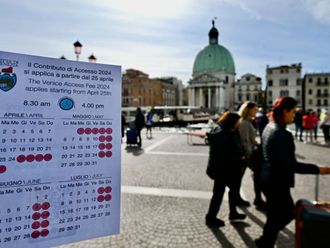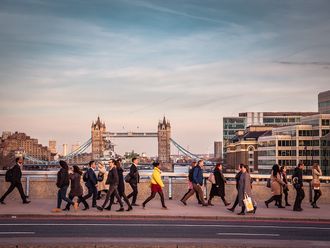Dubai: Four- and five-star hotels in Abu Dhabi were 83.1 per cent occupied in December 2014, outperforming Dubai hotels, which had an occupancy rate of 82.2 per cent for the same month, according to a HotStats survey released on Wednesday.
In Dubai, revenue per available room (RevPAR) rose 2.2 per cent to $308.26 (Dh1,131.31, driven by a 1.4 per cent growth in occupancy and a 0.4 per cent increase in average room rates (ARR) to $375.1.
Christopher Hewett, senior consultant at TRI Consulting in Dubai, said in a statement that Dubai’s hotels’ performance last month exceeded 2013’s performance.
“Although the market has been facing challenges with geopolitical issues in Eastern Europe and the revival of Egypt’s tourism industry, Dubai continues to steam ahead in attracting an increasing number of visitors,” Hewett said.
Hotels’ total revenue per available room (TRevPAR) rose 3.5 per cent to $573.3, driven by higher food and beverage and conferencing revenues.
Gross operating profit per available room (GOPPAR) grew by 4 per cent to $286.3.
Dubai has seen a drop in Russian visitors in the last several months as a result of a falling rouble which has kept some Russians from travelling.
Dubai International Airport attracted 70.47 million passengers in 2014, up 6.1 per cent compared with 2013, taking over the top spot for international passenger traffic.
Food and beverage revenue
Meanwhile in Abu Dhabi, hotels saw RevPAR reach $141.55, up 22.8 per cent year-on-year in December, helped by a 10 per cent rise in occupancy and a 7.9 per cent growth in ARR to $170.37.
The growth in rooms revenue was offset by a drop in food and beverage revenue, which fell by 4.4 per cent and 2.4 per cent respectively last month. However, TRevPAR grew by 15.8 per cent to $301.25.
“The Abu Dhabi hotel market achieved strong performance levels across the board in 2014, as hotels benefited from a 4.6 percentage point rise in occupancy levels on the back of increased tourist numbers. After facing years of oversupply, average rates rebounded during the year with the market breaching threshold required to see average rates increase by 0.8 per cent over 2013,” Hewett said.
Higher demand, which was particularly prevalent during the second half of the year, was boosted by the continued promotional campaigns of the Abu Dhabi Tourism and Culture Authority, he said, adding that Abu Dhabi captured increased leisure demand during the peak season due to its entertainment offerings, such as Yas Mall.












